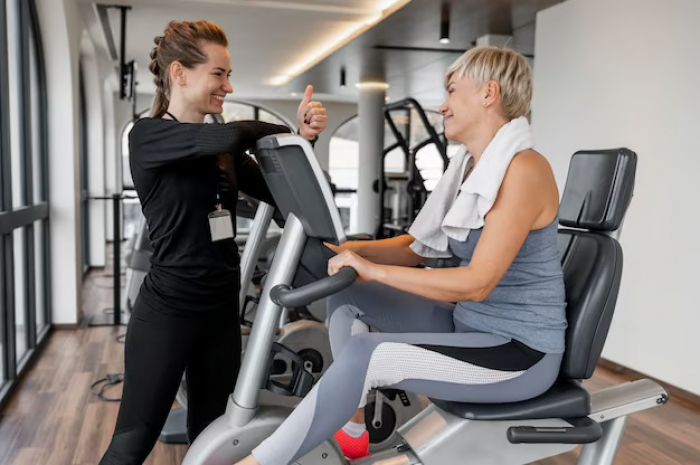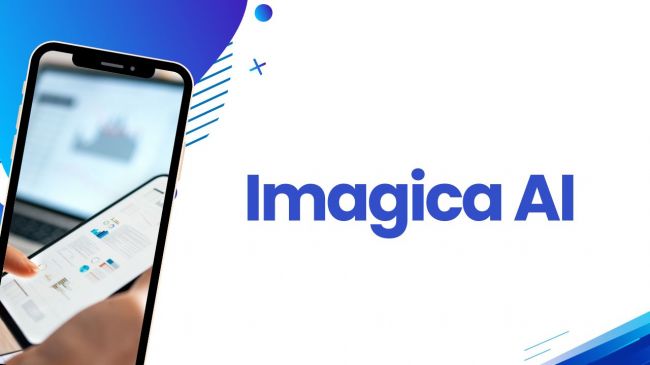Performance metrics gauge fitness professionals' effectiveness in gym management. These metrics, often represented by key performance indicators (KPIs), serve as benchmarks for assessing staff performance and optimising service delivery to clients.
One critical area of focus for performance metrics is training effectiveness. By monitoring KPIs related to training outcomes, such as client progress, retention rates, and satisfaction levels, HR professionals can gauge training programs' impact on fitness professionals and clients. This data-driven approach enables continuous improvement in training methods and content, ensuring they meet clients' evolving needs and enhance overall satisfaction.
Client satisfaction is another crucial aspect measured through performance metrics. By actively soliciting feedback through surveys and analysing client satisfaction scores, HR empowers the organization to pinpoint areas for improvement. This valuable data allows for targeted strategies that enhance the client experience. Progress tracking, alongside employee feedback, offers valuable insights into the effectiveness of fitness professionals in helping clients achieve their goals.
Goal setting is pivotal for improving performance. By establishing clear, measurable objectives aligned with organisational goals, HR empowers fitness professionals to strive for excellence and monitor their progress over time. Regular data analysis enables HR to identify trends, strengths, and areas needing improvement, facilitating targeted support and resource allocation to enhance performance.
Performance metrics are invaluable tools for HR to optimise the effectiveness of fitness professionals within gym management. By leveraging KPIs, evaluating training effectiveness, tracking client satisfaction, and setting clear goals, HR can drive continuous improvement and ensure exceptional service delivery to clients.
It is worth noting that any accredited business management course will enable you to do this for your company.
Effective Employee Evaluation Strategies for Fitness Facilities

Employee evaluations are a crucial but often overlooked aspect of effective gym management. Employee evaluations are tools for growth, offering feedback and fostering a culture of continuous learning. Let's explore some strategies for conducting meaningful employee evaluations within your fitness facility:
Focus on Performance, Not Just Results: on the skills and knowledge a trainer brings. Use evaluations to assess a trainer's ability to connect with clients, design personalised programs, and demonstrate effective communication. Consider including peer observations to gain a well-rounded perspective.
Effective evaluations are goal-oriented. Set clear performance objectives at the beginning of an evaluation period and revisit them in the assessment. This process ensures that trainers and management work towards shared goals and allows for adjustments as needed.
Feedback should flow in both directions. Don't just assess trainers; provide them with the opportunity to share feedback on their work environment, resources available, and potential areas for improvement within the gym. This fosters collaboration and ensures the evaluation process is a valuable learning experience for everyone involved.
Evaluations shouldn't be solely about identifying shortcomings. Use the opportunity to discuss professional development opportunities. Explore potential certifications, training programs, or mentorship opportunities to help trainers enhance their skill sets and advance their careers.
Effective evaluations aren't limited to annual reviews. Implement regular check-ins throughout the year to provide continuous feedback and promptly address concerns. This open and ongoing communication promotes a culture of growth and allows trainers to adjust their approach based on real-time feedback.
By employing these strategies, gym managers can transform employee evaluations from a formality into a valuable tool for development and motivation. This fosters a more engaged and skilled workforce, which ultimately translates to superior service for your members and the long-term success of your fitness facility. Investing in employees fosters an involved, professional workforce, leading to exceptional service and long-term gym success.
HR Tools for Fitness Staff Performance
In gym management, Human Resources (HR) tools play a pivotal role in enhancing the performance of fitness professionals. These tools streamline various HR processes, enabling efficient management and optimisation of staff performance.
One essential HR tool for fitness professionals' performance is employee scheduling software. This technology allows HR professionals to efficiently create and manage staff schedules, considering availability, workload, and client demand. By optimising schedules, HR can ensure adequate staffing levels to meet gym operational needs while minimising employee burnout and fatigue.
Performance management software enhances HR's ability to assess and improve fitness professionals' performance. This software enables HR to establish clear performance metrics, track key performance indicators (KPIs), and conduct regular performance evaluations. By providing actionable insights into staff performance, HR can identify areas for improvement, offer targeted feedback and coaching, and recognise top performers, fostering a culture of continuous growth and development.
Employee feedback tools are essential for soliciting input from fitness professionals and gathering insights into their experiences and needs. These tools, which may include surveys, feedback forms, or anonymous suggestion boxes, provide valuable information for HR to assess staff morale, identify areas of concern, and implement strategies for improvement. HR is committed to employee engagement and satisfaction by actively listening to staff feedback, ultimately driving performance and retention.
Training and development platforms are indispensable HR tools for enhancing the skills and knowledge of fitness professionals. These platforms provide diverse educational resources like online courses, webinars, and certifications, fostering staff growth and professional development. By investing in training and development opportunities, HR empowers fitness professionals to stay abreast of industry trends, acquire new skills, and deliver high-quality service to gym members.
HR tools play a vital role in optimising the performance of fitness professionals within gym management. By leveraging scheduling software, performance management tools, employee feedback mechanisms, and training platforms, HR can enhance staff productivity, engagement, and satisfaction, ultimately driving the gym's success.
Optimising Fitness Professional Productivity in Your Facility
Maximising Fitness Professional productivity is critical to member satisfaction and business success in a competitive fitness landscape. Here's how to create an environment that empowers these professionals to do their best work:
Go beyond basic certifications. Offer Fitness Professionals opportunities to specialise in pre-and postnatal fitness, injury rehabilitation, or sports performance. Online resources, workshops, and conferences provide readily accessible avenues for continuous learning. This empowers them to cater to diverse client needs, personalise sessions, and deliver exceptional results.
Leverage technology to streamline processes and free up Fitness Professional time. Implement appointment scheduling software, online client portals for progress tracking, and wearable fitness integration for data-driven coaching. This reduces administrative burden and allows trainers to focus on what they do best – coaching and motivating clients.
Analyse Fitness Professional workflows and identify bottlenecks. Consider consolidating repetitive tasks like creating workout plans or progress reports using pre-designed templates or software solutions. This frees up valuable time for trainers to spend on personalised client interaction, building rapport, and delivering engaging fitness experiences.
Break down silos between Fitness Professionals. Encourage knowledge sharing through internal workshops, peer-to-peer coaching sessions, or mentorship programs. Open communication encourages innovation and allows trainers to learn from each other's strengths. Collaborative brainstorming can also lead to developing new and effective training programs, further enhancing client results.
Micromanagement stifles creativity. Trust your Fitness Professionals' expertise and give them autonomy in designing and delivering programs. Empower them to personalise client experiences and celebrate successes together. Public recognition or incentive programs based on client satisfaction or performance metrics can further boost morale and motivate trainers to excel.
By implementing these strategies, you can move beyond basic productivity metrics and foster a dynamic environment where Fitness Professionals are empowered, engaged, and equipped to reach their full potential. This translates to better client service, improved member results, and, ultimately, the thriving success of your fitness facility.
Frequently Asked Questions
Why are performance metrics important for Fitness Professionals in gym management?
Performance metrics, represented by key performance indicators (KPIs), provide benchmarks for assessing Fitness Professionals' performance and optimising service delivery to clients, ensuring effectiveness and quality in gym operations.
How do performance metrics measure training effectiveness for Fitness Professionals?
Performance metrics related to training outcomes, such as client progress, retention rates, and satisfaction levels, allow HR professionals to evaluate training programs' impact on Fitness Professionals and clients, driving continuous improvement and meeting evolving client needs.
What role does client satisfaction play in performance metrics for Fitness Professionals?
Performance metrics include client satisfaction measures obtained through feedback mechanisms and satisfaction scores analysis, enabling HR to identify areas for improvement and enhance the client experience, ultimately leading to increased satisfaction and retention for Fitness Professionals.
How can performance metrics contribute to goal setting and performance improvement for Fitness Professionals?
Performance metrics help establish clear, measurable objectives aligned with organisational goals, empowering Fitness Professionals to monitor their progress over time. Regular data analysis enables HR to identify trends, strengths, and improvement areas, driving continuous performance enhancement among Fitness Professionals.
What HR tools are essential for optimising trainers' performance in gym management?
HR tools like employee scheduling software, performance management software, employee feedback mechanisms, and training platforms are crucial for enhancing trainers' productivity, engagement, and satisfaction, ultimately driving the gym's success.
How do performance metrics contribute to the overall success of a fitness facility for trainers?
By leveraging performance metrics, HR can drive continuous improvement, ensure quality service delivery to clients, and foster an environment of growth and development among trainers.
Post Comment
Be the first to post comment!





